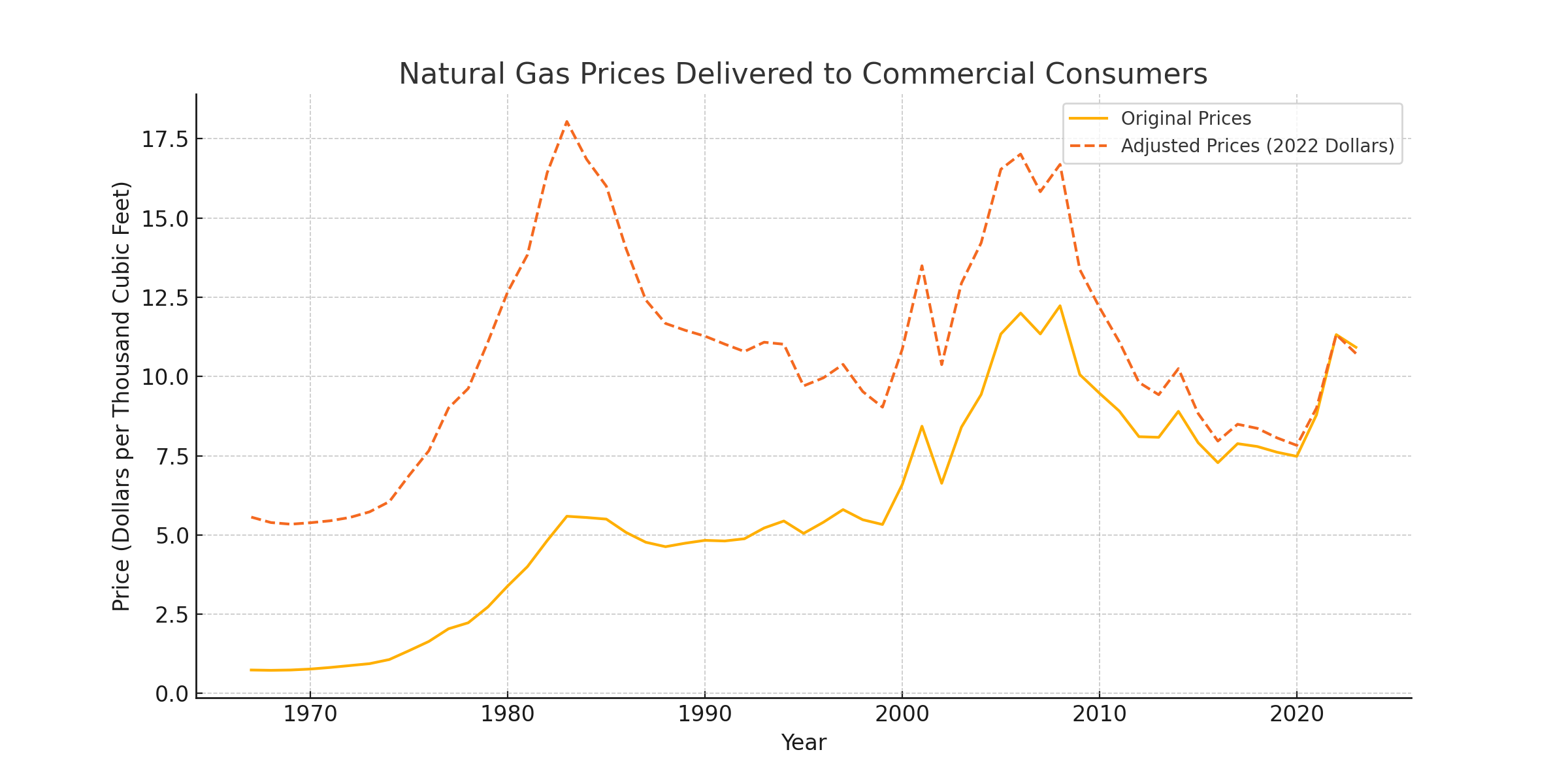fueling business
Businesses large and small depend on natural gas.

Natural Gas Fuels Businesses
More than 5.6 million businesses in the United States use natural gas, including businesses and buildings that we use every day such as schools, hospitals, police and fire stations, offices, restaurants, grocery stores, retail outlets and public spaces. They are core to the U.S. energy economy and fundamental to our daily lives.
How do businesses use natural gas?
- In the United States, commercial primary energy use was 4,868 Trillion Btu in 2022. While total energy use in the U.S. was 31,088 Trillion Btu. This includes 3,633 Trillion Btu of the 4,868 Trillion Btu which was provided by natural gas.
- Natural gas consumption in the U.S. commercial sector exceeded 3.6 trillion cubic feet (Tcf) in 2022.
- Prices for commercial customers are impacted by similar factors as residential customers with the commodity cost of natural gas contributing the biggest impact to customer prices.

- The share of commercial buildings that use natural gas has remained relatively constant across the entire commercial building fleet, suggesting that commercial natural gas growth closely mirrors the rate of growth across the entire commercial building market.
Economic Impact
- Natural gas utility commercial customers have benefited from a reliable lower cost of service. In 2015, commercial customers’ utility bills reached a new low of $405 on average, the lowest since AGA began collecting data in 2003.
- Commercial customers are a core part of local distribution company (LDC) revenue. In 2022, commercial customers accounted for approximately 23 percent of total revenues for natural gas utilities. Total natural gas utility sales revenue in 2022 was $100.3 billion, and commercial customers accounted for $22.7 billion of that total.
Appliance and Building Codes and Standards
- Codes and Standards play a critical role in helping ensure that natural gas applications in the commercial sector are installed and operated safely and reliably. Each state, and often local governments within each state, determine which codes and standards apply to their commercial occupancies.
- Building efficiency standards affect how a structure is designed and built, and its lifetime energy usage. While there are various state commercial building construction efficiency regulations in use around the country, ASHRAE Standard 90.1, Energy Standard for Buildings Except Low-Rise Residential Buildings, is the most widely adopted minimum.
Looking Forward
- The U.S. Energy Information Administration (EIA) projects commercial floor space to continue a long-term increase while total energy consumption declines. However, purchased natural gas for commercial consumption is projected to remain fairly constant through 2050.
- In the near term, there are clear opportunities to expand natural gas service to commercial customers:
- Leverage natural gas as a tool for economic growth.
- Promote new technologies to improve energy services, lower costs, and reduce emissions.
- Replace heating oil with natural gas, especially in the northeastern US.
- Leverage existing efficiency programs to comply with broader economic or environmental policy goals.
For More Information